We spoke with a comrade and anarchist feminist from Kazakhstan to get a better understanding of what’s going on and to understand how local activists view the situation. What is the social nature of the uprising, what are its demands and forms, who is leading the armed struggle, and what consequences will these events bring to the region.
Being on the ground, tell us what has been happening and is happening in the country?
It all started with the economic demands of workers in western Kazakhstan, where gas prices were sharply raised. Then the demands became political: the resignation of the government and president, the election of akims (mayors) and a parliamentary republic. Some demands were met, but not immediately, and while they were ignored, the wave of protest managed to cover all cities of Kazakhstan.
Since in those regions, and especially in Zhanaozen they remember the shooting in 2011, the character of the assemblies was very peaceful. People gathered in the center of the squares of their cities and called for a dialogue with the Akims and then the Ministers and the President. Those who gathered abruptly self-organized in the squares, set up yurts with hot meals and even organized a subbotnik, because they were afraid that they would be demonized by the media.
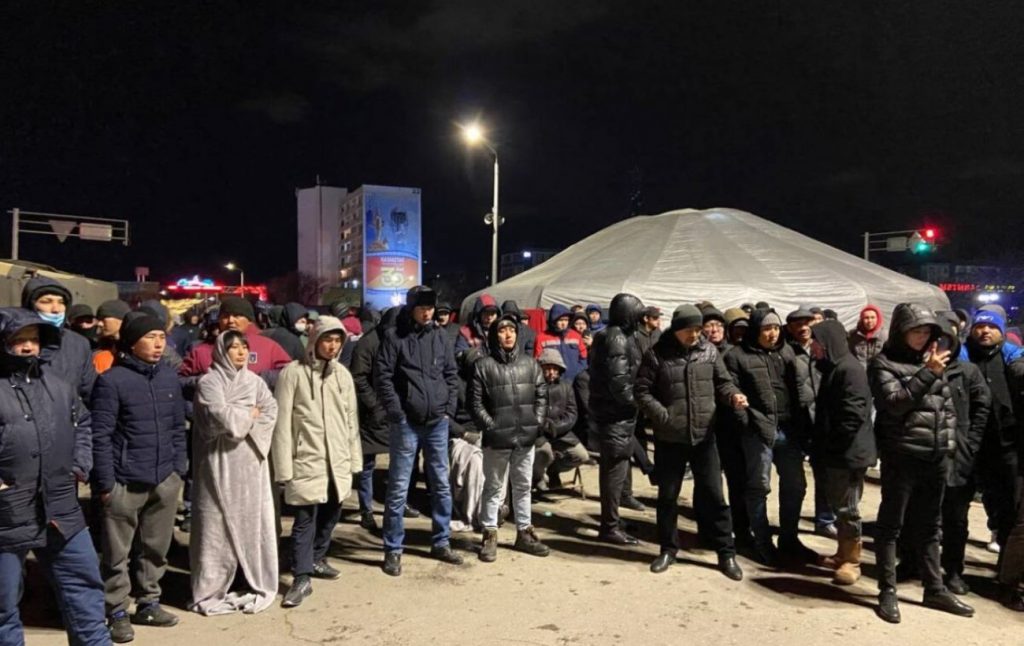
In western Kazakhstan, for three days, they tried to negotiate peacefully, but the akims were afraid to even come out to the people. Then the authorities began to forcefully disperse the gathering. So the protest turned into clashes with the police. It’s hard to protest peacefully when you’re being gassed and stun grenades thrown.
How it became so organized and militarized remains to be seen. After a night of pogroms and the strange disappearance of police from the streets of Almaty before armed groups of people, many of us wondered if the protest could have been used as an opportunity to replay the distribution of resources and power among those who already hold almost all the capital in this country. Who were the members of these armed groups afterwards, how homogeneous the crowd of protesters was, why they came out, and whether anyone was in command is unknown. We don’t use the rhetoric of state propaganda or call them terrorists. At the same time, as I think, in Kazakhstan it is impossible to secretly form an armed and perfectly coordinated guerrilla movement in all cities.
When the attacks on administrative buildings and police stations still continued in various cities in southern Kazakhstan, in the west the protest seemed to stay in the same format, and then simply died out. The economic demands of the workers there were met, the political partially: there was a reshuffle in the government, but Tokayev did not leave the presidency.
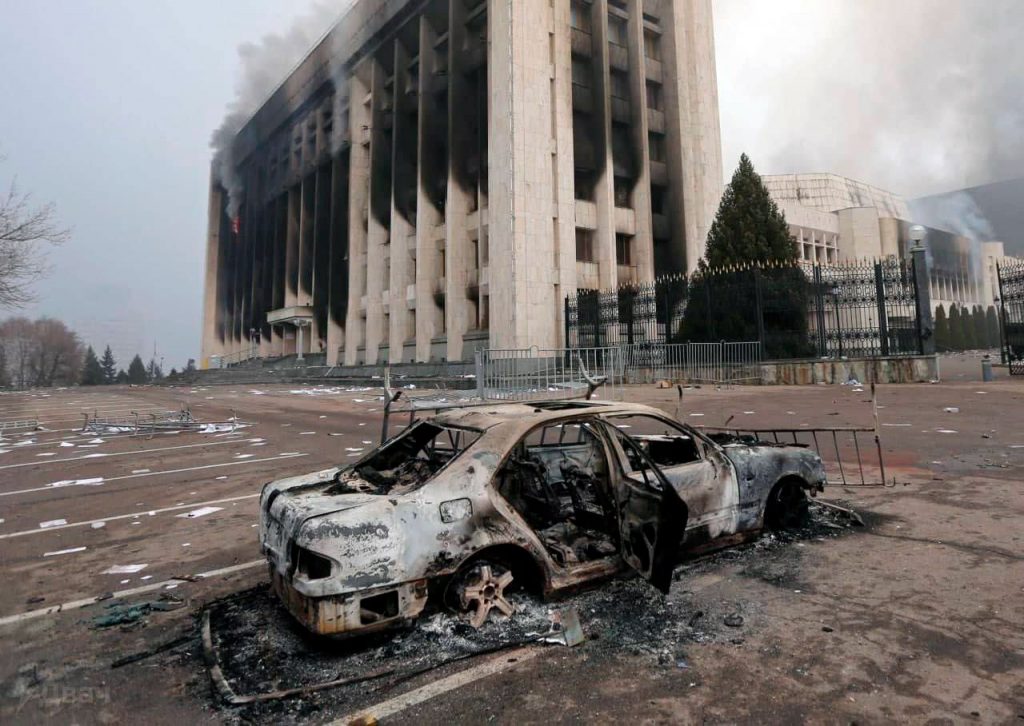
The communication blackout, state of emergency, curfew and red level of terrorist threat have completely untied the hands of the punitive system and there are already eight thousand detainees whose cases have not been disclosed. The casualty count likely runs into the thousands. People have been hurt first in clashes with the police. Then in clashes between protesters and armed groups, and then there were the shooting of civilians by the Kazakh military. So far, trade union leaders have disappeared, journalists and bloggers who were broadcasting have been arrested for their participation in the rallies, leaders of non-state political parties have been arrested. But now we see only a small part of the big picture.
Everyone outside of Kazakhstan is trying to analyze what’s going on and it’s difficult without knowing the context. And those who are now inside the country can’t do that because of the lack of information. Many of us have no hope of finding out what really happened in the near future.
What social groups are involved in the uprising?
Those who came out in the beginning were factory workers and people living in small towns in western Kazakhstan whose livelihood depends on factories. They were supported by the entire population of those cities, because the protest was against the increase in gas prices, on which everything depends in the regions – heating and hot water, cars.
People came out en masse in other cities, because the demands of the protest were as close and clear to them as possible, plus solidarity with other regions is important.
This is different from previous protests, judging by Almaty. For three years in a row, young people, “hipsters” as we were called, and representatives of political movements came out to peaceful rallies in the city center.
Now even territorially the first hotbed of protest on January 4 evening in Almaty was formed not in the center of the city, but on the wide highway separating the upper and lower part of the city. Which clearly shows what strata of the population took part in it: the people who live “down town” and provide the whole city life with their work. These are the Kazakh-speaking youth, the working class.
They’ve come out to rallies before, but not in such large numbers. The last time it was during the presidential election of 2019, when they were severely beaten in the streets and over 4,000 people were detained.
So you could say it’s almost an uprising of the oppressed working classes for more social justice?
Now this is all very controversial, but I don’t like the romanticization of protest among some leftists and the praise of the rioters who were able to take some stuff for themselves out of destroyed stores while someone was burning cars, and not just the police. It is clear that there was simply nowhere to form a culture of protest in Kazakhstan. The brutal suppression of the Soviet Kazakh protest in 1986 in Almaty and the shootings in Zhanaozen in 2011 – both of which have yet to be investigated and those responsible for the mass murders have not been punished. Maybe not the political desire of the less wealthy social class to overthrow the rich and take revenge on the police, but the use of the poor as cannon fodder by the very “rich” in their game of thrones is behind the expropriation of money, equipment and coming to town to burn a couple of police cars. Or perhaps a huge number of people spontaneously took to the streets, hoping for a new opportunity to influence the future of their country. When the protest gained momentum, uniting different social groups, it was sharply crushed by cutting off communications, fragmenting groups, and bringing in troops. So now they are frantically looking for an image of the enemy among the Kazakh-speaking strata of the disadvantaged population, Islamist radicals and terrorists. That is, there are attempts to demonize the active groups of protesters who seized the buildings.
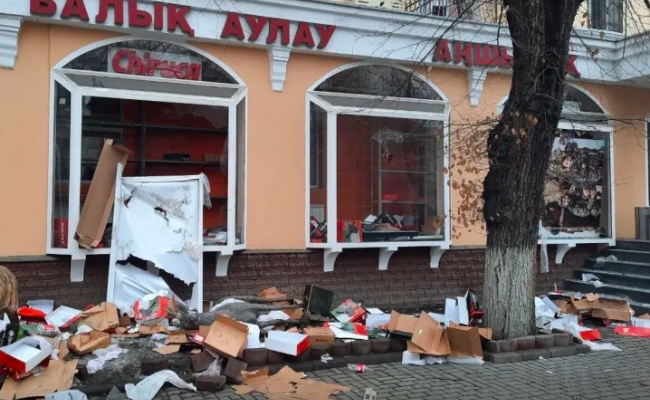
I can judge only by personal experience and experience of my acquaintances, who at this moment were on the streets, volunteering, helping the wounded and came out to a peaceful protest on January 6 against the entry of CSTO troops, when they were shot at. I suggest you read the eyewitness accounts of this now emerging.
How did people coordinate and make demands?
In the west of Kazakhstan, the coordinators elected by the workers read out their demands on the loudspeaker, in the squares. In other cities the situation was similar. When the protest became armed and the occupation of buildings began, no more demands were voiced.
The coordination of the protest at first was through trade union movements in the west of Kazakhstan, in Almaty and other cities spontaneously created telegram and Whatsapp chats, where almost no one understood what was happening, but wanted to go out into the streets and put forward mostly economic demands.
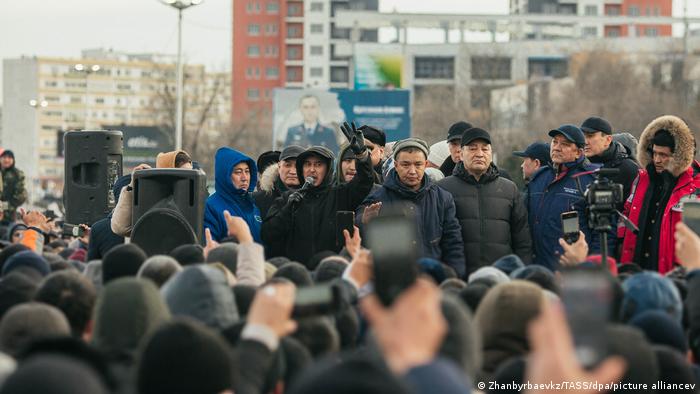
When, on the night of January 5, the mobile Internet and partially cellular service was completely cut off, according to those who had it, most of the armed protesters were able to coordinate and post videos from the scene, while my acquaintances on the streets and journalists were completely out of touch. It is difficult to assess this information now, since not everyone still has full access to the Internet, videos and photos from the scenes of the incidents only appear in the public domain. For example, now there are just stories of protesters from the square that a coordinating headquarters, groups of volunteers were created and general demands to the city authorities and to the leadership of the country were collected and written. They wanted to voice them publicly, but did not have time before the arrival of the military.
How did the anarchists participate in the events?
We don’t have a formed anarchist movement, but all the anarchist activists and other leftists were on the streets at the time.
We saw very strong self-organization both at the beginning of the protest, when people were just gathering, and now, as we are all trying to somehow deal with the aftermath of pogroms, shootings, and street killings.
According to information now emerging from activists, couriers from various delivery services were visible on the streets, actively participating in the protests in their own vehicles, transporting the wounded and providing aid. They have had their own union since 2021.
In your opinion, where is this going?
In the beginning we had a lot of hope for a better future in Kazakhstan, but then the protest became different, and Russia and other states introduced troops. The state discourse is constantly changing in search of an enemy. Yesterday it was supposedly bribed unemployed people from Kyrgyzstan, today it is already radicals from Afghanistan. We all hope that tomorrow the activists who advocated political reforms in Kazakhstan for the last three years and came out to rallies will not be called the enemy.
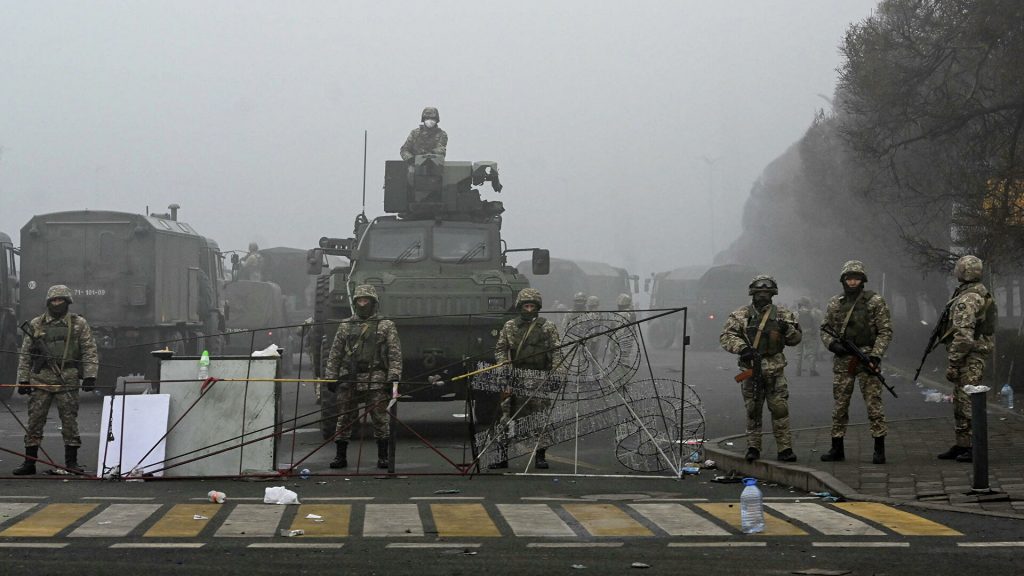
Right now I and all of my comrades see a bleak outlook. We don’t understand what happened in the end. I won’t describe the theories, which are in our infofield right now, but all of them concern different struggle for power between Nazarbayev clan and other contenders. For example, the version that Tokayev, with the hands of the Russian military, is winning a place under the sun. If we assume that it is true – it is scary that tens of thousands of people were involved in their game, and good attempts and intentions to change social and political conditions in Kazakhstan for the better for all were used by several people to divide resources of the country among themselves in a new way.
We assume that now the consequences of the protest will be used as a warning to those who wanted to liberalize the laws on peaceful assemblies and talk about the need for political reforms. In general, as proof that the people are not ready to participate in the political life of the country. Plus, it remains to be seen how the introduction of Russian troops will affect us.
Now it is very important that the bloody January in Kazakhstan did not become just a beautiful revolutionary picture. But also not to be remembered as a terrorist act, an attack from outside, as the government sources from different countries, especially from Kazakhstan, say.
Not much time has passed yet to be able to reflect on all of these events, to collect the necessary information, to learn from it and to conduct investigations. I hope we will still have the opportunity to do this. Just as there will be a chance for the people to rid the country of the power of dictators.
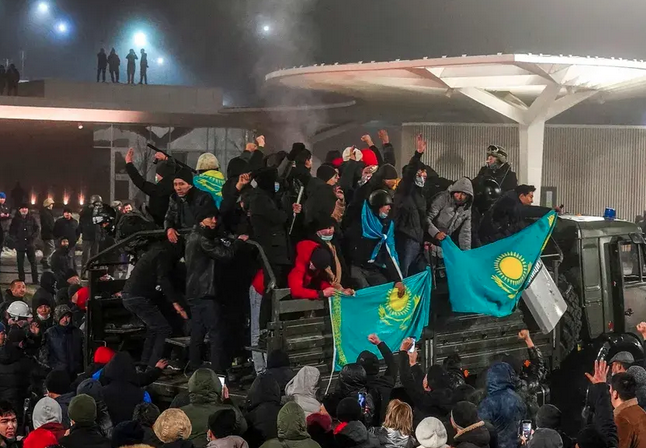
There have never been such large-scale protests in Kazakhstan, and after these, I hope we will become even more solidary across the country, and the culture of protest will be able to develop further. I think everyone’s consciousness changes when they first go out on the street with their comrades to try to change things, and really realize that they can affect the future. We have never had the opportunity to experience this before, and I hope we will not forget this new feeling under the weight of old repression, the aftermath of the defeats, and the recovery from the general popular trauma of the harsh use of arms against us in our country.
Boris Engelson for pramen.io
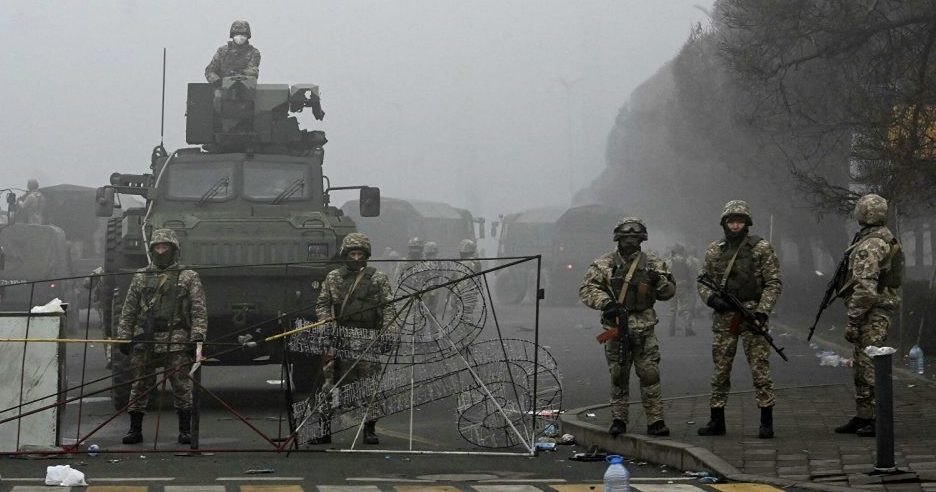
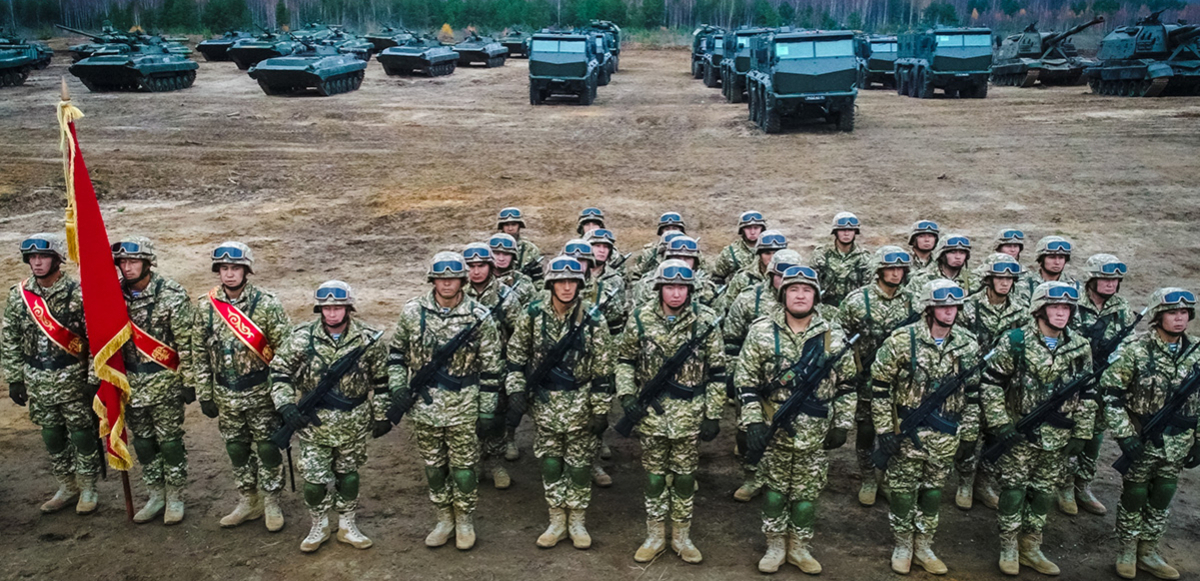
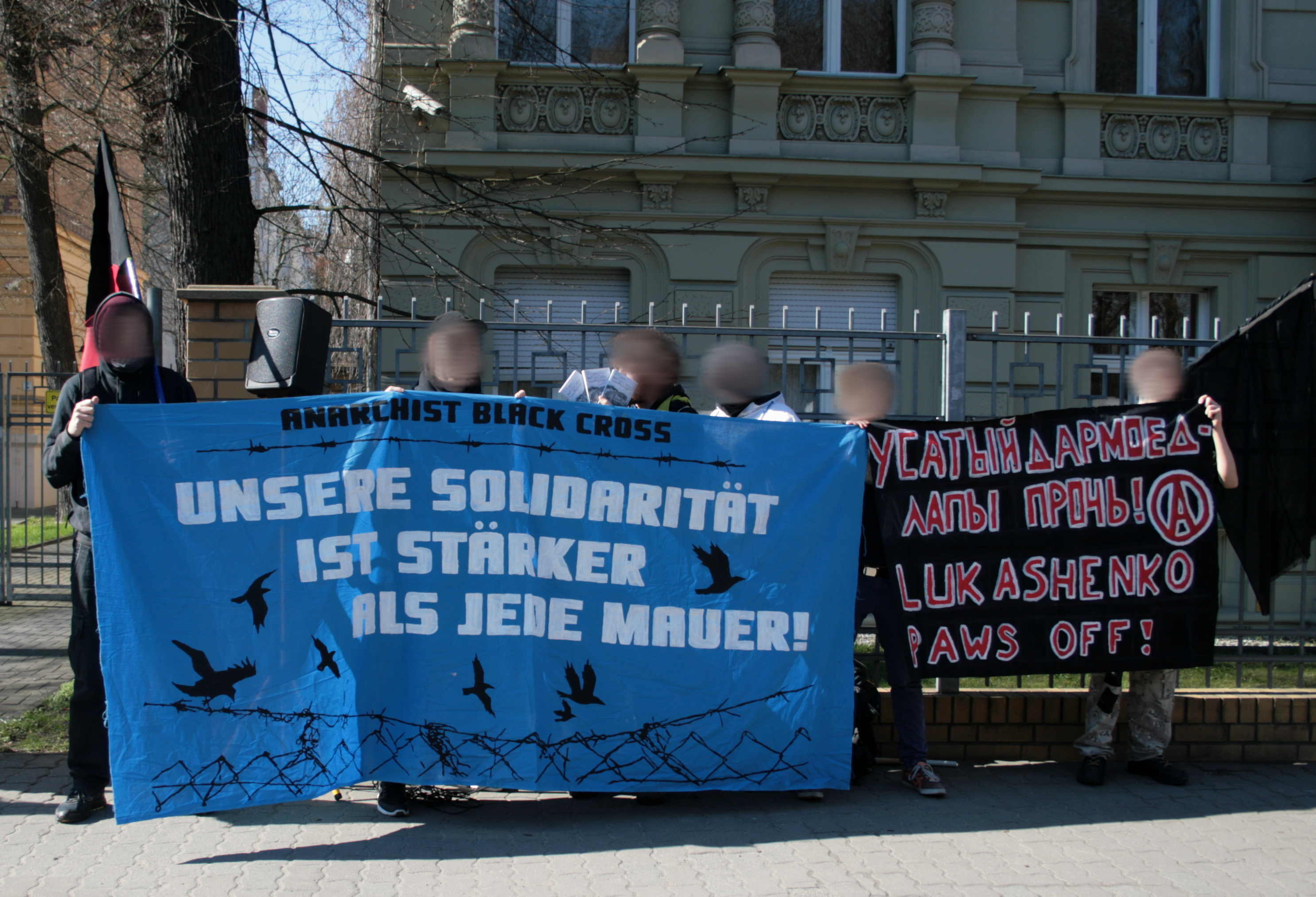

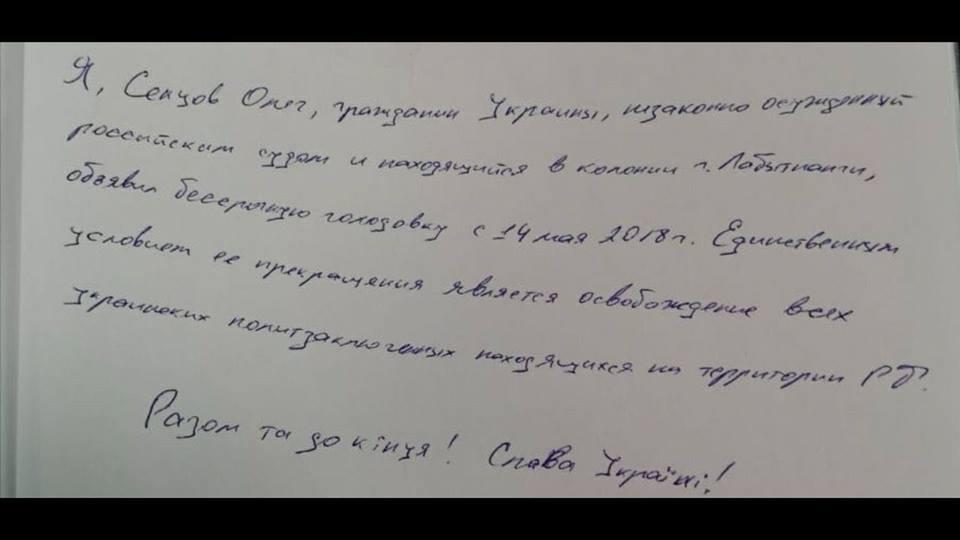
Dictators or democrats all rulers, governors and bosses are our enemies.
Anarchy/Communism (the true, not the red painted capitalism) is not a changing of oppression, but an ending of all oprression.
Think about this.
Greets from Universal Revolution Initiative.